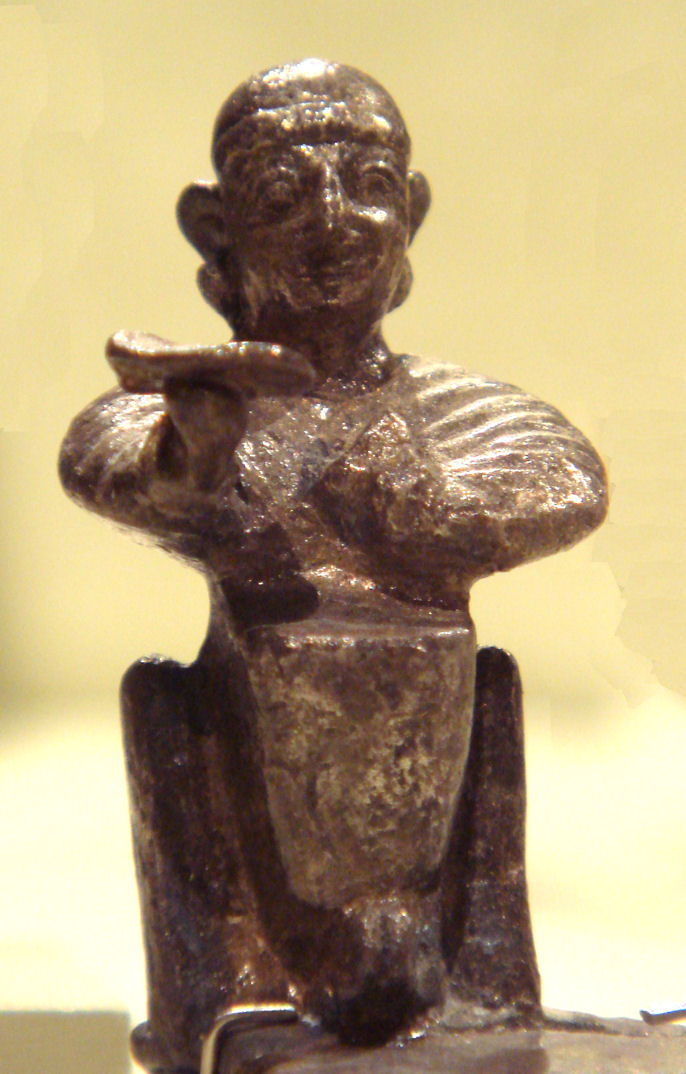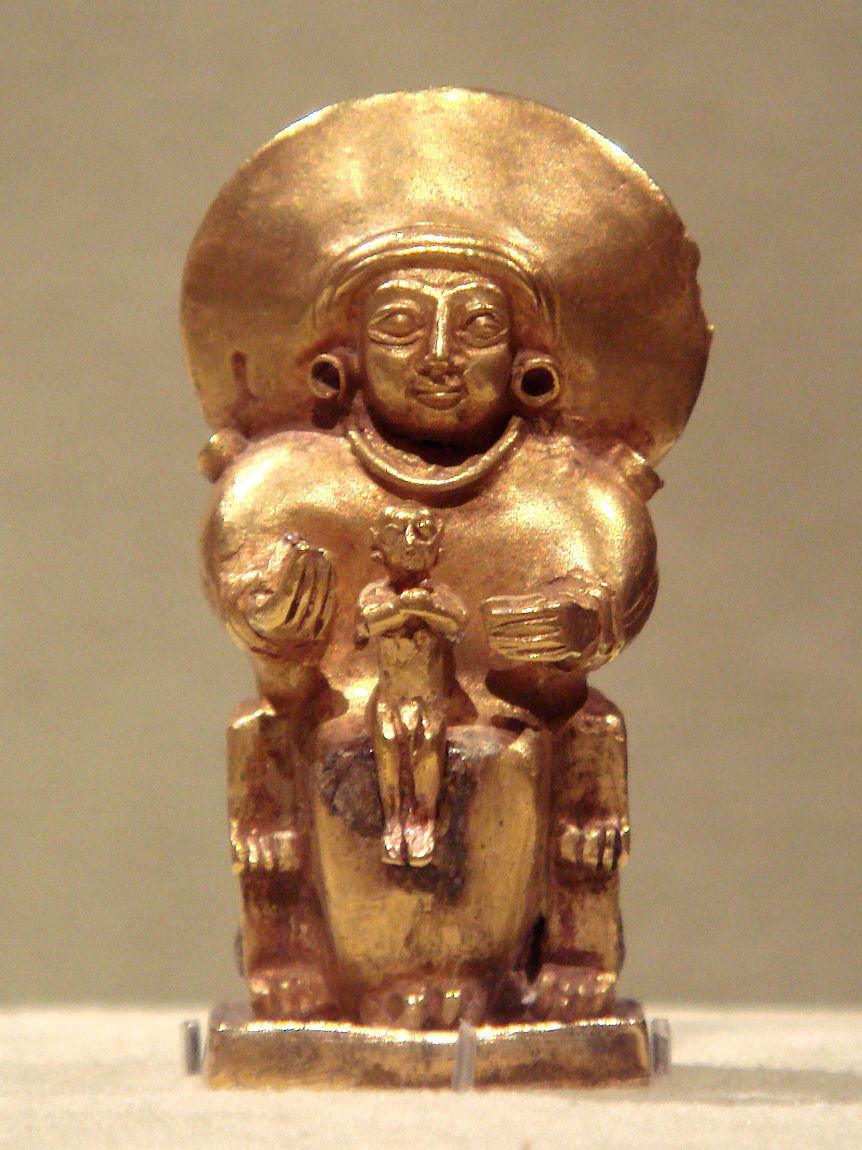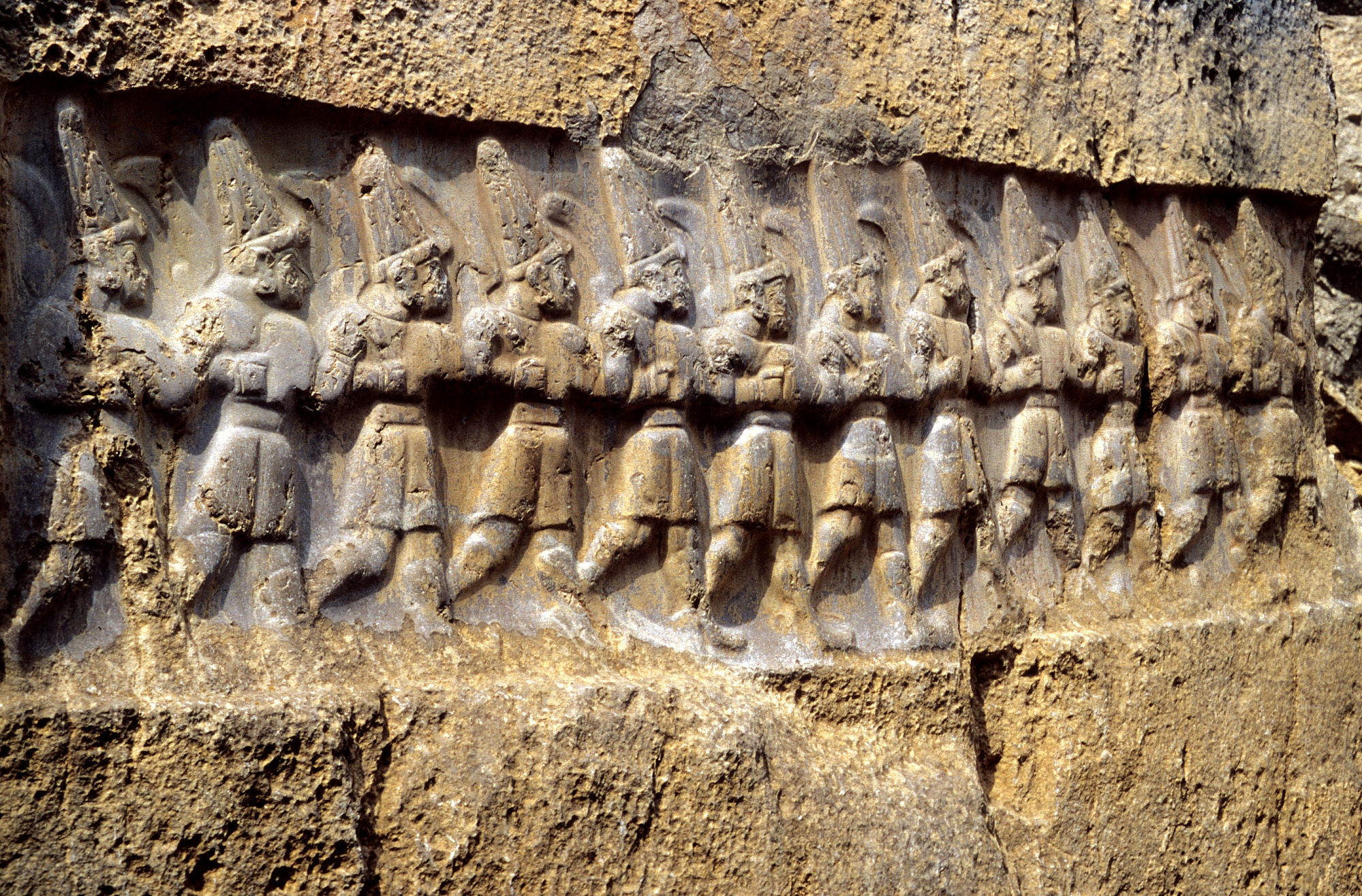|
Weather God Of Zippalanda
The Weather god of Zippalanda was a Hittite weather god, who was worshipped in the Hittite city of Zippalanda. The weather god of Zippalanda had several names, such as Ziplantil, Wašezzili,Piotr Taracha: ''Religions of Second Millennium Anatolia''. Wiesbaden 2009, p. 55. Wašezzil and Wašezzašu. Role In ancient Anatolia, weather gods were the rulers of the sky and the mountains.Volkert Haas, Heidemarie Koch: ''Religionen des alten Orients: Hethiter und Iran''. Göttingen 2011, p. 228. They cast down thunder, lightning, clouds, rain and storms. The weather god of Zippalanda was also worshipped as a sender of rain. He was also worshipped as a fertility deity. Additionally, Wašezzili was referred to as a "lion" among the gods and therefore as a divine hero. Family In the official state pantheon of the Hittites, the Weather god of Zippalanda Wasezzili was regarded as the son of Tarḫunna, the 'Weather god of Ḫatti', and the Sun goddess of Arinna. As the son of the Sun god ... [...More Info...] [...Related Items...] OR: [Wikipedia] [Google] [Baidu] |
Hittite Mythology
Hittite mythology and Hittite religion were the religious beliefs and practices of the Hittites, who created an empire centered in Anatolia from . Most of the narratives embodying Hittite mythology are lost, and the elements that would give a balanced view of Hittite religion are lacking among the tablets recovered at the Hittite capital Hattusa and other Hittite sites. Thus, "there are no canonical scriptures, no theological disquisitions or discourses, no aids to private devotion". Some religious documents formed part of the corpus with which young scribes were trained, and have survived, most of them dating from the last several decades before the final burning of the sites. The scribes in the royal administration, some of whose archives survive, were a bureaucracy, organizing and maintaining royal responsibilities in areas that would be considered part of religion today: temple organization, cultic administration, reports of diviners, make up the main body of surviving te ... [...More Info...] [...Related Items...] OR: [Wikipedia] [Google] [Baidu] |
Weather God
A weather god or goddess, also frequently known as a storm god or goddess, is a deity in mythology associated with weather phenomena such as thunder, snow, lightning, rain, wind, storms, tornadoes, and hurricanes. Should they only be in charge of one feature of a storm, they will be called after that attribute, such as a rain god or a lightning/thunder god. This singular attribute might then be emphasized more than the generic, all-encompassing term "storm god", though with thunder/lightning gods, the two terms seem interchangeable. They feature commonly in polytheism, polytheistic religions, especially in Proto-Indo-European mythology, Proto-Indo-European ones. Storm gods are most often conceived of as wielding thunder and/or lightning (some lightning gods' names actually mean "thunder", but since one cannot have thunder without lightning, they presumably wielded both). The ancients didn't seem to differentiate between the two, which is presumably why both the words "lightning bo ... [...More Info...] [...Related Items...] OR: [Wikipedia] [Google] [Baidu] |
Zippalanda
Zippalanda was a Hattic administrative and religious center of the Hittite Old Kingdom. Although its name was known from inscriptions, it was not until the latter 20th century that scholars placed it in Sorgun District of Yozgat Province, Turkey, near Kerkenes Dağ (Kerkenes Mountain often identified with Mount Daha (Mount Taha)), about one day's journey north of Ankuwa (present-day Alışar Höyük). History Zippalanda was one of the ancient Hattic religious centers (''šiunan'' URU "city of the gods") that retained privileges in the Old Kingdom. These also included Arinna and Nerik; early on, Hattusa was added to these as well. Also toward the end of the Hittite Empire, after Muwatalli II moved the Hittite capital from Hattusa to Tarhuntassa, this also became a sacred city. The Hittite king participated in official religious ceremonies such as the '' purulli''-festival, spring and autumn Imperial festivals, the festival of the month, and possibly the hunting festival (th ... [...More Info...] [...Related Items...] OR: [Wikipedia] [Google] [Baidu] |
Tarḫunna
Tarḫunna or Tarḫuna/i was the Hittite weather god. He was also referred to as the "Weather god of Heaven" or the "Lord of the Land of Hatti". Name Tarḫunna is a cognate of the Hittite verb ''tarḫu-zi'', "to prevail, conquer, be powerful, be able, defeat"; from the Proto-Anatolian weather god ''*Tṛḫu-ent-,'' "conquering"; ultimately from PIE ''*terh₂-'', "to cross over, pass through, overcome". The same name was used in almost all Anatolian languages: Luwian '' Tarḫunz-''; Carian ''Trquδ-''; Milyan ''Trqqñt-'', and Lycian: ''Trqqas'' (A), ''Trqqiz'' (B). Norbert Oettinger has argued that the functions of the Anatolian weather god ultimately come from the Proto-Indo-European god Perkwunos, but that they did not preserve the old name to coin instead the new epithet ''Tṛḫu-ent-'' ("conquering"), which sounded close to the name of the Hattian Storm-god ''Taru''. Role As weather god, Tarḫunna was responsible for the various manifestations of ... [...More Info...] [...Related Items...] OR: [Wikipedia] [Google] [Baidu] |
Sun Goddess Of Arinna
The Sun goddess of Arinna, also sometimes identified as Arinniti or as Wuru(n)šemu, is the chief Goddess of Hittite mythology. Her companion is the weather god Tarḫunna. She protected the Hittite kingdom and was called the "Queen of all lands." Her cult centre was the sacred city of Arinna. In addition to the Sun goddess of Arinna, the Hittites also worshipped the Sun goddess of the Earth and the Sun god of Heaven, while the Luwians originally worshipped the old Proto-Indo-European Sun god Tiwaz. It appears that in the northern cultural sphere of the early Hittites, there was no male solar deity. Distinguishing the various solar deities in the texts is difficult since most are simply written with the Sumerogram dUTU (Solar deity). As a result, the interpretation of the solar deities remains a subject of debate. Family and myths The Sun goddess of Arinna and the weather god Tarḫunna formed a pair and together they occupied the highest position in the Hittite state's pa ... [...More Info...] [...Related Items...] OR: [Wikipedia] [Google] [Baidu] |
Sun Goddess Of The Earth
The Sun goddess of the Earth ( Hittite: ''taknaš dUTU'', Luwian: tiyamaššiš Tiwaz) was the Hittite goddess of the underworld. Her Hurrian equivalent was Allani and her Sumerian/Akkadian equivalent was Ereshkigal, both of which had a marked influence on the Hittite goddess from an early date. In the Neo-Hittite period, the Hattian underworld god, Lelwani was also syncretised with her. In Hittite texts, she is referred to as the "Queen of the Underworld" and possesses a palace with a vizier and servants. In the Hittite New Kingdom, she is attested as the mother of two weather gods. The Weather god of Nerik was her son with the god Šulinkatte, while the Weather god of Zippalanda was her son by the . The Sun goddess of the Earth, as a personification of the chthonic aspects of the Sun, had the task of opening the doors to the Underworld. She was said to cleanse all evil, impurity, and sickness on Earth.Piotr Taracha: ''Religions of Second Millennium Anatolia''. Wiesbaden 20 ... [...More Info...] [...Related Items...] OR: [Wikipedia] [Google] [Baidu] |
Anzili
Anzili or EnziliPiotr Taracha: ''Religions of Second Millennium Anatolia''. Wiesbaden 2009, p. 56. was a Hittite goddess who was worshipped in Tamita and Zapišḫuna. Her name is sometimes written with the Sumerogram IŠTAR or the compound IŠTAR-''li''. In Ḫurma, the goddess Anzili was considered the partner of the Weather god of Zippalanda, but she is also attested as the partner of the Weather god of Šarišša. In Kuliwišna she was worshiped with the local weather god and the LAMMA-tutelary god. Along with the goddess Zukki, Anzili was involved in rituals to aid childbirth. Anzili and Zukki are among the many Hittite deities, whose temporary disappearance is the topic of myth (compare Telipinu, the Sun goddess of Arinna, Inara, the , Ḫannaḫanna, the , and various weather gods, including the weather god of Kuliwišna). The standard pattern is that the deity disappears as a result of their anger and they have to be mollified in order to bring them back. In the cas ... [...More Info...] [...Related Items...] OR: [Wikipedia] [Google] [Baidu] |
Volkert Haas
Volkert Haas (1 November 1936 – 13 May 2019) was a German Assyrologist and Hittitologist. __NOTOC__ Life Volkert Haas studied Assyrology and Near Eastern archaeology at the Free University of Berlin and the University of Marburg from 1963 to 1968. In December 1968 he received a doctorate in Assyriology from the Free University. After that, he was an assistant at the "Institute for the History of Medicine" at the Free University from 1969 to 1970. There he worked on Babylonian and Assyrian medical texts under the supervision of Franz Köcher. From 1970 to 1973, he carried out the research project "The Hurritological Archive" within the Ancient Near Eastern department of the Free University and he continued to be employed there as an assistant from 1973 to 1977. In 1979, Haas received his habilitation in Ancient Near Eastern philology. After holding an assistant professorship at the Free University from 1977 to 1981, Haas received a position as Professor of Near Eastern Studies a ... [...More Info...] [...Related Items...] OR: [Wikipedia] [Google] [Baidu] |
Heidemarie Koch
Heidemarie Koch (17 December 1943 – 28 January 2022) was a German Iranologist. Life and career Koch was born in Merseburg, Saxony, Prussia, Germany. She studied mathematics as her major between 1963 and 1966. Subsequently, she worked as a teacher in Hanover, Lower Saxony, West Germany, until 1972. In 1972, she started Iranian studies at the University of Göttingen and received her doctorate in 1976. The topic of her dissertation under Walther Hinz was the religious conditions under Darius I, based on Elamite tablets of Persepolis ("Die religiösen Verhältnisse der Dareioszeit. Untersuchungen an Hand der elamischen Persepolistäfelchen."). Koch took as her minor subjects Classical archaeology, Byzantine art history, and Christian archaeology. From 1977 to 1986 she was employed at the Department of Iranian Studies and Near Eastern Archaeology at the University of Göttingen. In 1986, at the University of Marburg, she worked on the topics of labour administration and the econo ... [...More Info...] [...Related Items...] OR: [Wikipedia] [Google] [Baidu] |
Hittite Deities
Hittite mythology and Hittite religion were the religious beliefs and practices of the Hittites, who created an empire centered in Anatolia from . Most of the narratives embodying Hittite mythology are lost, and the elements that would give a balanced view of Hittite religion are lacking among the tablets recovered at the Hittite capital Hattusa and other Hittite sites. Thus, "there are no canonical scriptures, no theological disquisitions or discourses, no aids to private devotion". Some religious documents formed part of the corpus with which young scribes were trained, and have survived, most of them dating from the last several decades before the final burning of the sites. The scribes in the royal administration, some of whose archives survive, were a bureaucracy, organizing and maintaining royal responsibilities in areas that would be considered part of religion today: temple organization, cultic administration, reports of diviners, make up the main body of surviving te ... [...More Info...] [...Related Items...] OR: [Wikipedia] [Google] [Baidu] |




